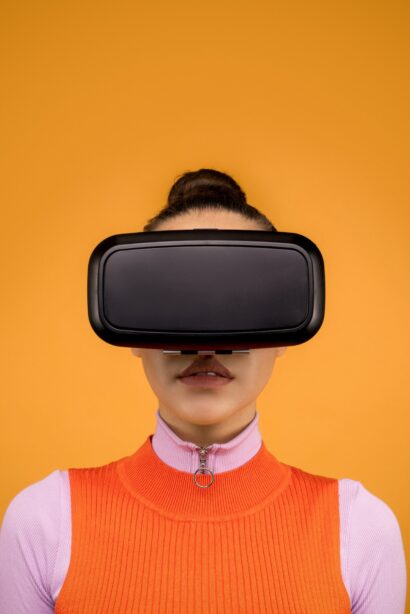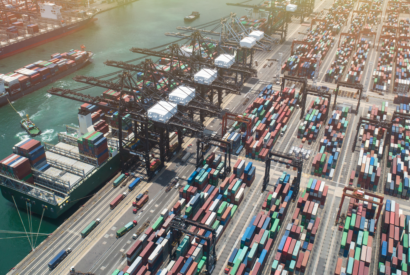by Trish Young, Partner
The Digital Revolution has become a quest, each trying to find the ‘magic’ to drive their business to the next quantum leap. But what does that mean for those of us still trying to figure out how Facebook knows what I just searched in Google, or why my house is now smarter than I am? I fear my Google Home assistant has replaced me as head of house, so when technology comes into the workplace, I’m fully questioning my own relevance. And I am not alone.
Tech advances such as connected devices, AR/VR and artificial intelligence are changing how we interact in our homes, shopping, and with our network. We are truly global and spheres of connection are broadening and busting borders. Everything we knew that shaped our view of self, business, and culture is challenged.
Retailers are scrambling to open innovative channels to capture the attention of distracted consumers while maintaining their hard-fought brand identities. This immediately creates a conflict: how can they invent something cutting edge with the same team? Matthew Shay of the National Retail Federation (NRF) recently stated, ‘before things happened over a generation, now it is happening overnight’. With 90-minute home delivery services springing up, drones taking the airways and 3D printers producing houses, disruptive change and competition surrounds us.
How do busy employees, buried in trade, allocation and distribution find time to think, learn and change? How can the retailer engage employees from across the business in transformation? Is this the role of leadership, or should CEO’s expect individuals to manage their own development to keep up? The Health and Safety Executive (HSE.gov.uk) states that the two predominant contributors to work-related stress are organizational changes at work and role uncertainty (lack of clarity about job/uncertain what meant to do.) Clearly, this is an issue for the organization as much as for the individual. Change must be part of the org strategy.

Organizational culture is a factor in how transformation is embraced. However even famously people-centerd organizations are struggling. Why? Because culture alone is not enough. New operating models, including organizational changes, are required to meet the needs of the new future of retail. This can increase anxiety and impact employee behavior in supporting the transformation programme, which can stall or even sabotage the results and outcome.
The reality is that people drive and make transformation happen. ERPs don’t implement themselves, human-centerd design requires… humans, and the digital store of the future still needs a host to navigate customers through it. Digital transformations can’t be achieved using old methods. However, hearing terms like Moore’s Law, Blockchain, GDPR, virtual experience economy and robotic process automation can be intimidating when they’re thrown at you as if everyone else understands them. This dilemma is not good when having all hands on deck within the organization is required to keep the boat rowing forward into uncharted waters.
So what to do about it? It’s easy enough to upskill by bringing in new, relevant capability, but that does not singularly solve the issue, and in some ways only increases it by disempowering dedicated people or missing critical team engagement. There is a fine balance between bringing in new talent while keeping the current population relevant and engaged. organization experience should not be discounted, and empowering and enabling teams to be an active part of the journey is the efficient and right investment.
Here are some steps to consider:
- Invest in people. This seems obvious, but is often seen as the ‘soft side’ of business. Process and technology do not exist without people, so we cannot underfund this leg of the triangle, include them in the budgeting in concert with the others.
- Embrace the next generation through blended teams including Generation Z (yes, we have run the course of the alphabet!) through apprentice and grad programmes. Put them in meaningful roles at the front to get maximum impact. This takes an additional upskilling of leadership so they know how to lead and create environments that will cater to their unique gifts and approaches.
- Communication can never be underplayed. A big area of stress for the workforce is not knowing what is going on or how they fit in the organization. Meaningful open-door communication all the way through, top to bottom, is important.
- Develop a culture of continuous learning. Many ways to build this: hold short lunch sessions onsite coupled with broadcasts over the web for remote workers, especially on those scary trends and topics; bring in thought leading speakers; include learning and experimenting in personal objectives; ensure leaders are attending conferences, lectures, workshops and maintaining an advisor network.
- Most of all, listen. Ensuring the culture encourages hearing from the workforce and then acts on it is invaluable. Some of the best ideas come from people who know the business inside out and therefore where it’s broken. Combining that with the spirit of continuous learning and new talent will drive your own organizational disruption.
Transformation is indeed the word of the decade. Every retailer is going through it, and key people are madly rotating across organizations as they take what they learned from one to the next. That’s certainly an option, but not the only one. Keeping the current workforce relevant and growing is an investment, but one that will keep that boat crossing those transformation waters as they get rough.




